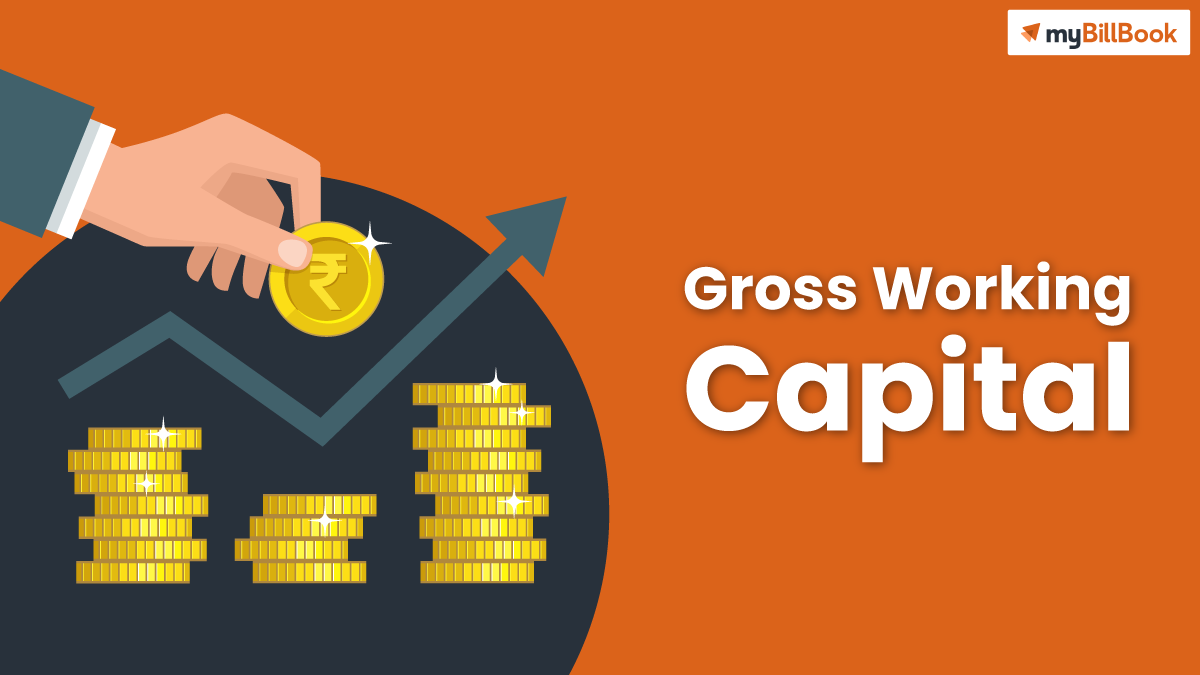Gross working capital has many benefits, but it can only show the half picture of the financial position of a company. It cannot completely prove the ability of the company to use its short-term resources effectively. To understand the full picture of the financial stability of a firm, you must calculate the net working capital.
Gross working capital will only include the sum or total of the current assets of a business firm, which means only half of the firm’s financial health. The other part being the current liabilities will only be calculated in the net working capital which is the difference between the current assets and the current liabilities of a business entity.
Usually, to express the working capital, the ratio of current assets and the current liabilities is used. A company always needs an accurate amount of working capital to function effectively and grow in the future. Working capital is always essential for any kind of company to meet the day-to-day operation successfully. This can be done by proper working capital management.
A variety of methods are used by business owners in which a company can increase the working capital ratio. Some of the techniques used by most companies include reducing time to collect the receivables from the customer, extending payable time frames with suppliers, enhancing inventory control, managinge expenses to improve the cash flow, and selecting vendors who offer the best deals and discounts and many more.
What is Gross Working Capital?
Gross working capital can be referred to as the total assets of a company or we can say that it is the sum of a company’s current assets that can be converted into cash within a year or less. Gross working capital consists of assets like cash, accounts receivable, inventory, short-term investments, and marketable securities. There is gross working capital and net working capital which you should never be confused with. Read more to learn about it.
A company can make the most of the gross working capital by considering both its benefits and limitations. This will assist in managing and optimizing the company’s available current assets. Moreover, the company or the business firm should use effective techniques and reliable financial metrics such as working capital ratio among others in order to project a precise monetary image.
Difference between gross and net working capital
If you would like to know about the major differences between the gross working capital and the net working capital, see the below table.
| Gross Working Capital | Net Working Capital |
| Quantitative in nature | Qualitative in nature |
| Shows the overall amount in hand for financing current assets | Shows whether the company can meet its operating expenses and its current liabilities |
| It is the result of the sum of all current assets of a company | It is the result of a difference between the current assets and the current liabilities of a company |
| The Gross working capital concept is used in financial management | The net working capital concept is used in the accounting system |
| Suitable for companies | Suitable for sole traders and forms under partnership |
| This type of capital does not reveal the financial position of a company | Net working capital reveals the financial position of a company |
| When the borrowings of a company increases, the gross working capital will also increase | When the retained profits and sales of assets are increased, the net working capital also increases |
| The formula to calculate the gross working capital is equal to the total Current Assets | The formula to calculate the net working capital is equal to Total Current Assets – Total Current Liabilities. |
What is the gross working capital formula and how to calculate gross working capital?
The gross working capital is calculated using a formula by all the business owners and financial analysts. The formula is given below.
Gross Working Capital = Total Value of Current Assets
Gross Working Capital = Receivables + Cash and Marketable Securities + Inventory + Short-term investments + Other Current Asset
You should also know that if you subtract the current liabilities from the current assets of a company, you will get the working capital or the net working capital of the company. When a company’s working capital is positive, it shows that the current assets of the company definitely greater than its current liabilities. If the working capital ratio of a company is less than 1, then the company will surely struggle to pay back its short-term debt. To attain a perfect balance in the company, it is necessary to manage the working capital properly.
Examples of gross working capital
Let us assume that XYZ is a company which reported their gross working capital as 7 million during the end of the fourth quarter of 2018. Their current liabilities are 7.23 million so their working capital ratio becomes 0.97. Their current liabilities have been coming from the short-term debt of 3 million.
By the end of the third quarter of the year 2020, the XYZ Company paid off all their debt of 3 million and did not take further debt to pay this off. Now their gross working came up to 7.8 million and current liabilities became 5 million, resulting in a working capital ratio of 1.56. The company also repaid its short-term debt between the end of 2019 and Sep 2020. Hence their current liabilities were reduced and the working capital ratio was measured above 1.0.
Another example of gross working capital is as follows:
The gross working capital of QPR Company is 60,000(Stock – 20,000, Sundry Debtors – 25,000, Bills Receivables – 10,500, and semi-finished goods – 4,500).
The current liabilities of QPR company are 30,000 (Sundry Creditors – 21,500 and Bills Payable -8,500).
So, the net working capital will be 60,000 – 30,000 which will be 30,000. When you check the ratio of the current assets to current liabilities you will get the ratio as 2: 1. This result shows that the company has good short-term liquidity and will not have to face liquidity issues in the future.
Importance of Gross Working Capital
When someone runs a business, several factors have to be considered, especially things related to different types of working capital. Here we are talking about gross working capital which is one of the important working capital a company has. Following are some of the importance of gross working capital.
- To get a clear idea about a company’s current liabilities, an in-depth analysis of gross working capital against the current liabilities can be helpful.
- Evaluating the gross working capital of a company or a business provides an understanding of the anticipated cash flow that will be accessible to the owners of the company.
- Gross working capital helps in determining the financial capacity and the company’s capability in repaying the liabilities effectively.
- Gross working capital also helps in computing the working capital ratio of the company.
- By understanding the gross working capital amount of a company, the investors and shareholders can make a decision regarding the investments in the company.
- The net working capital of a company can be easily calculated by the financial analysts and the business owners with the help of the gross working capital. The net working capital should be calculated as it can determine the liquidity of the company or the business.







